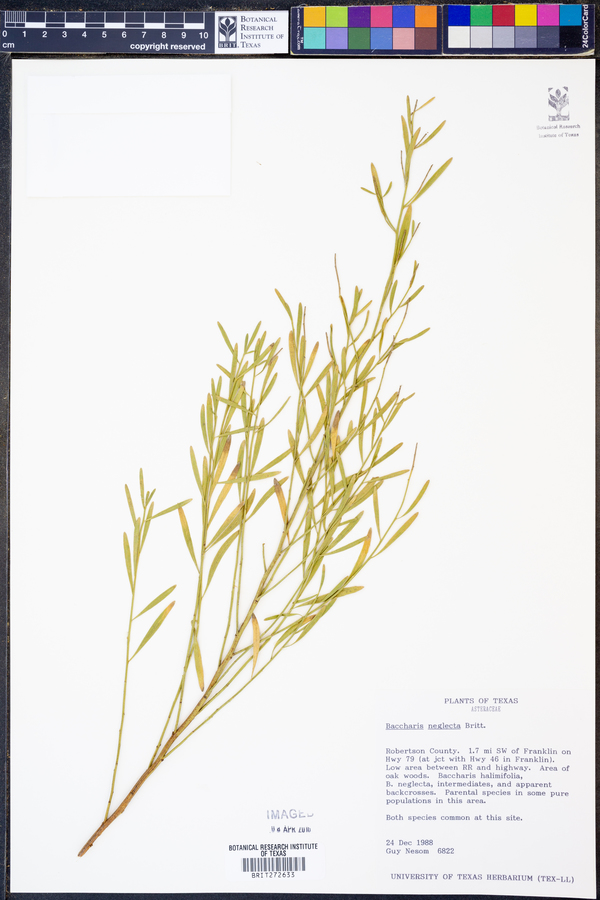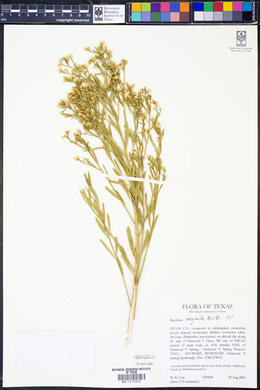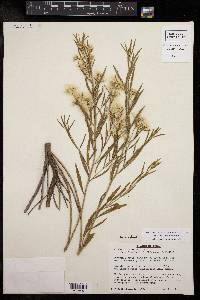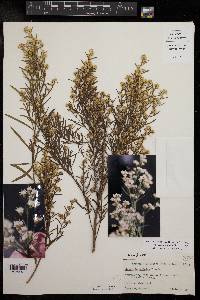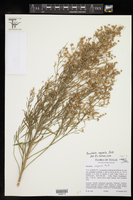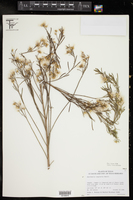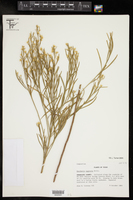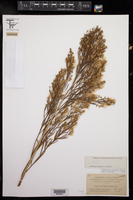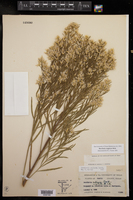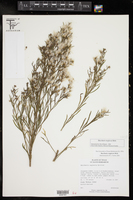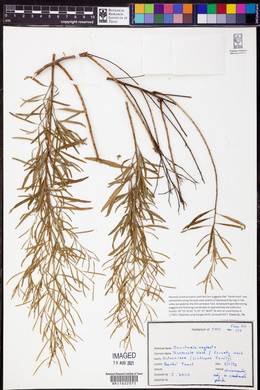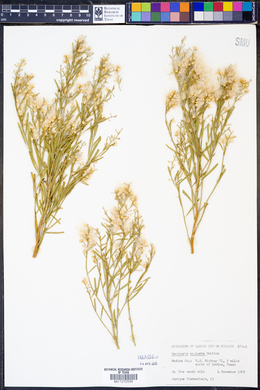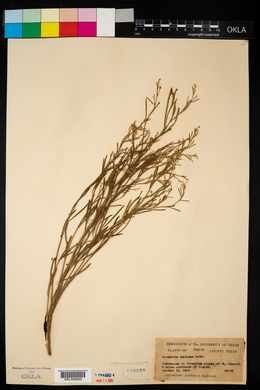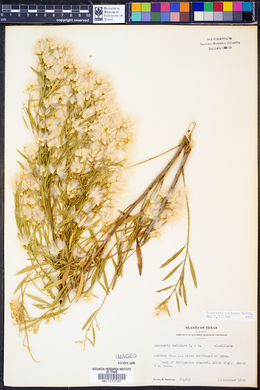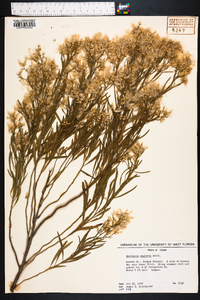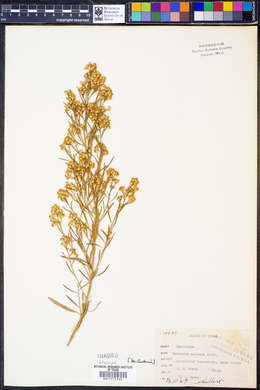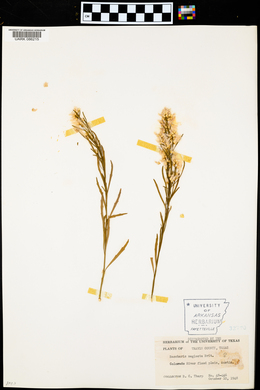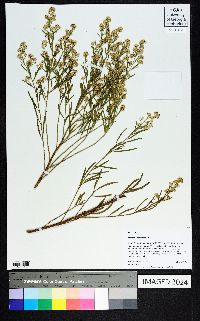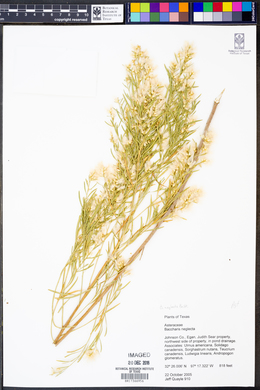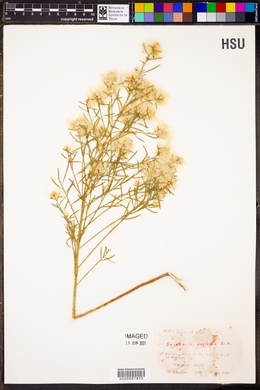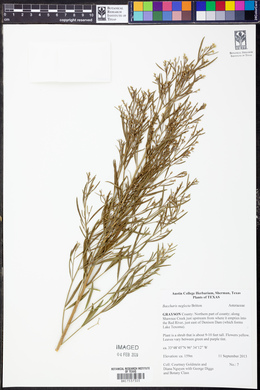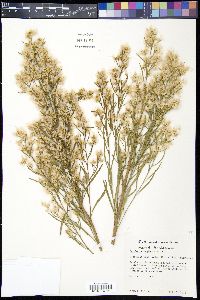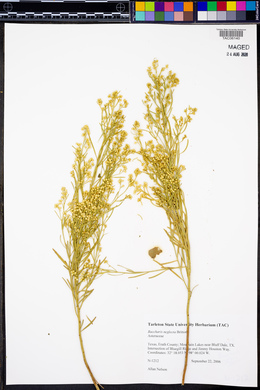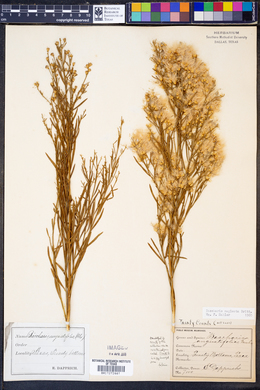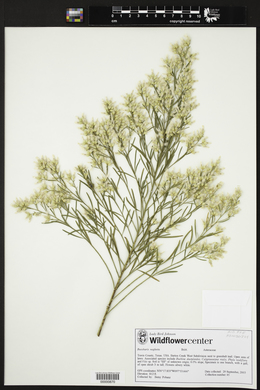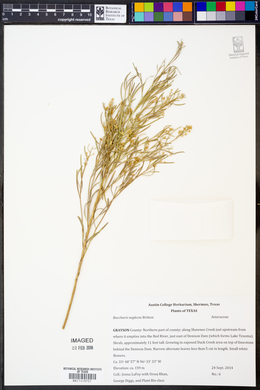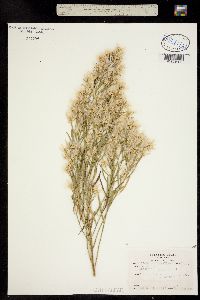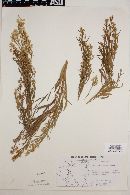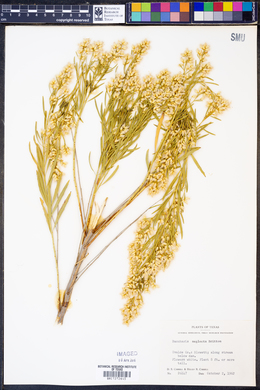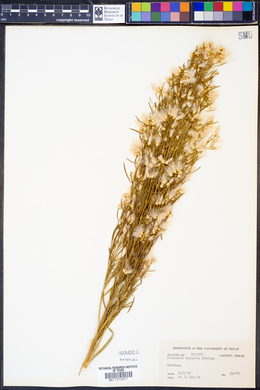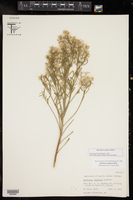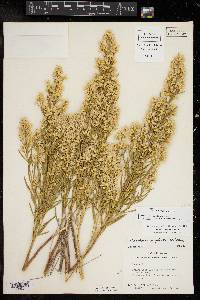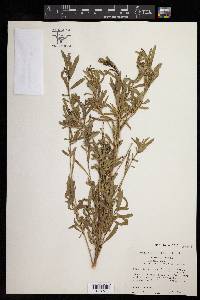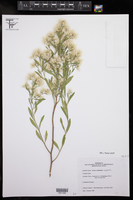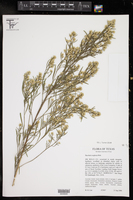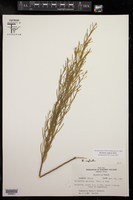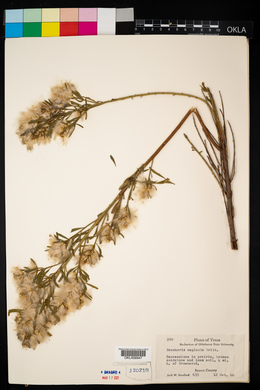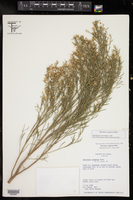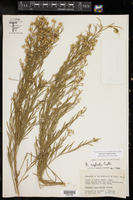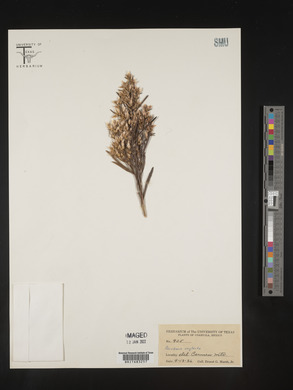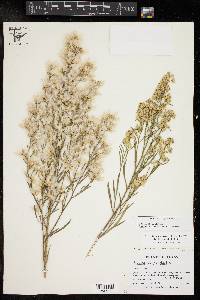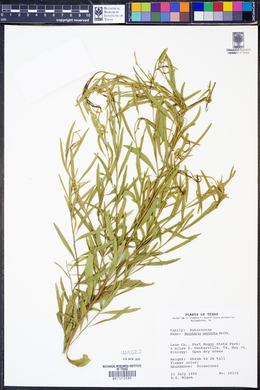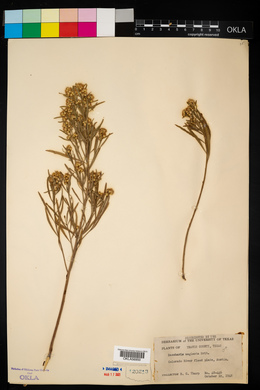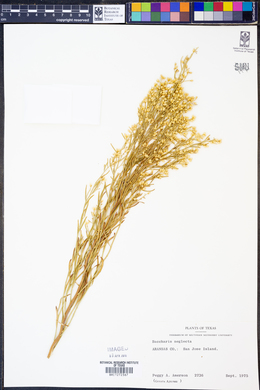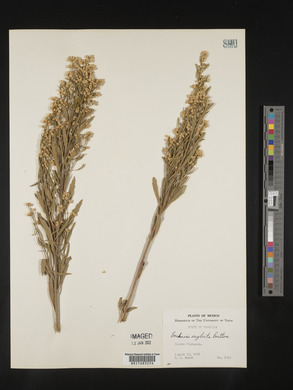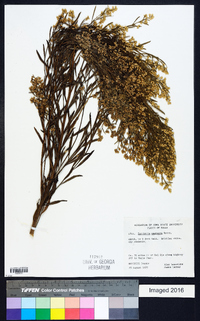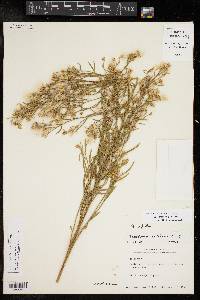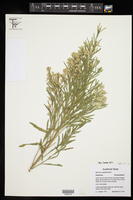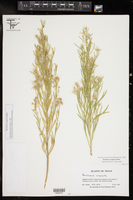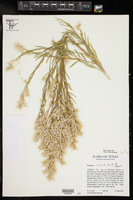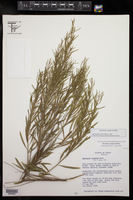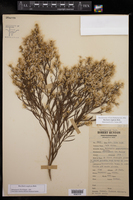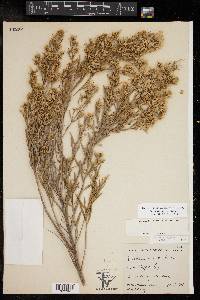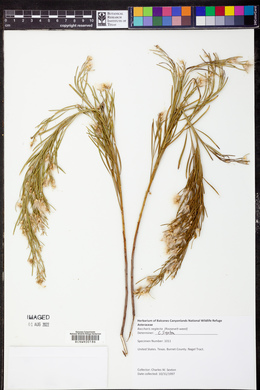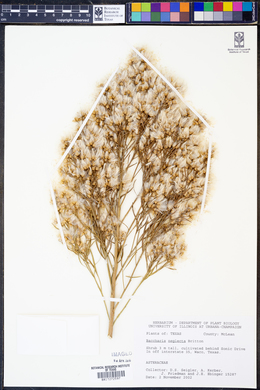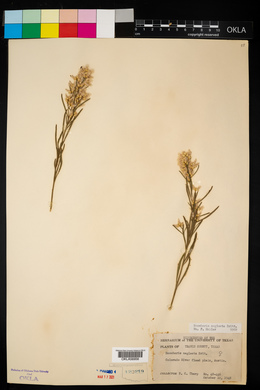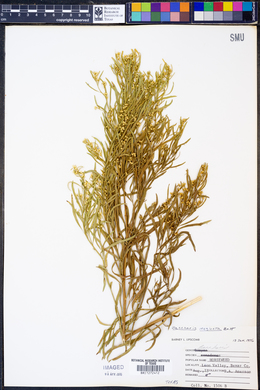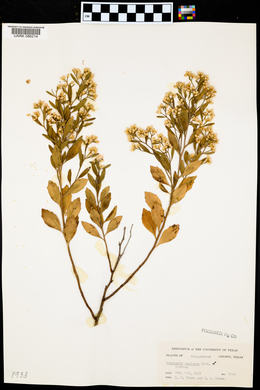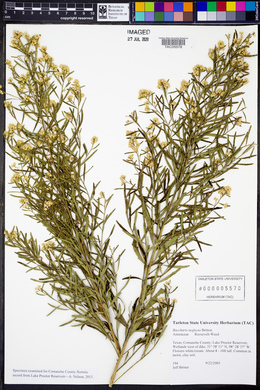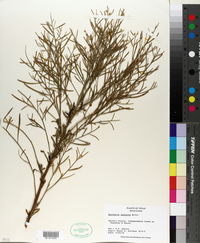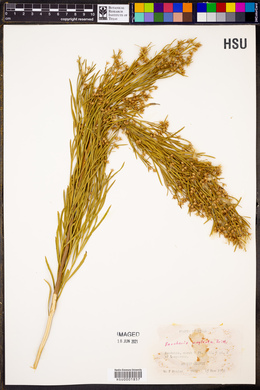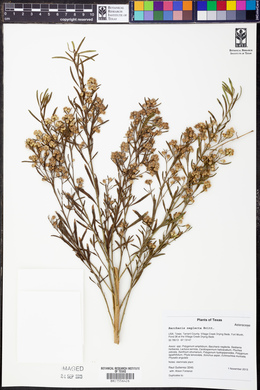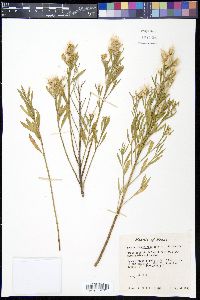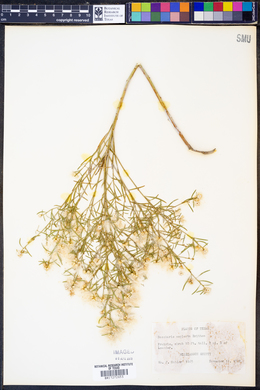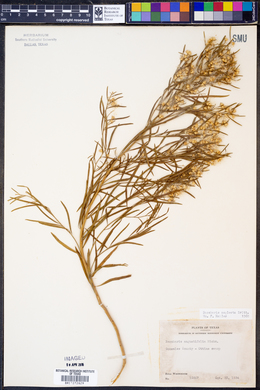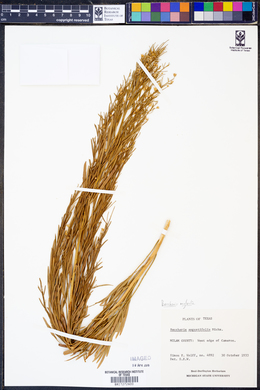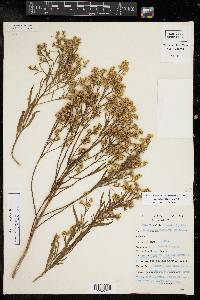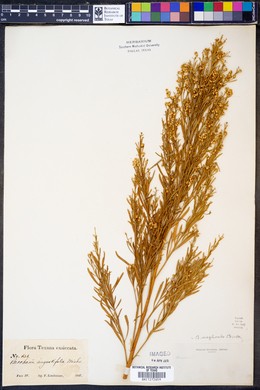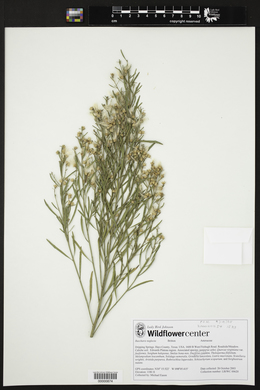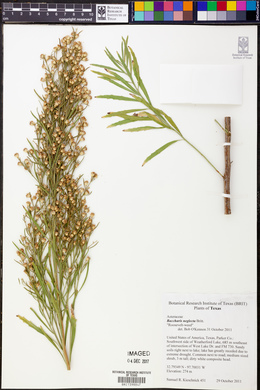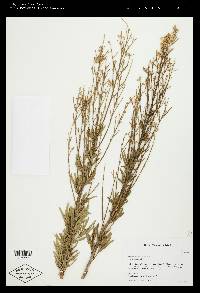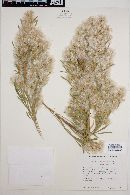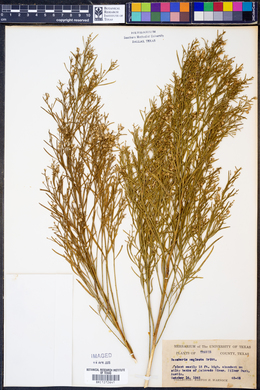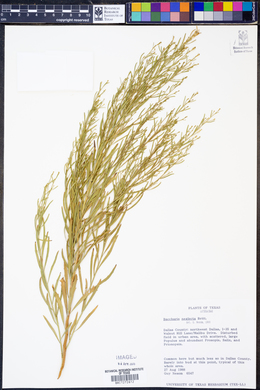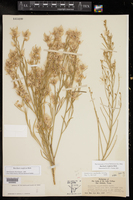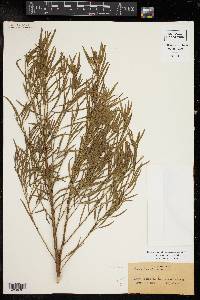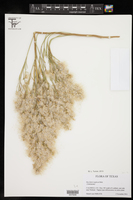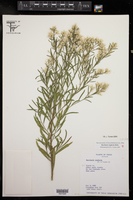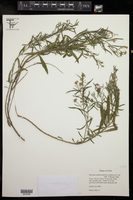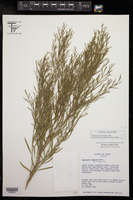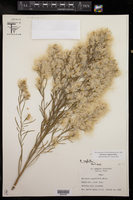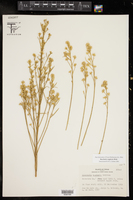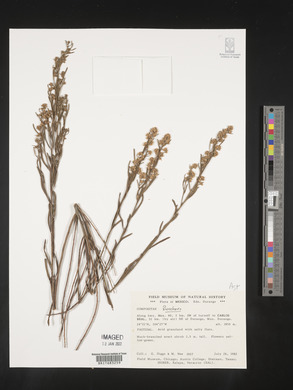
|
|
|
|
Family: Asteraceae
Roosevelt-Weed, more...Rooseveltweed
|
Shrubs, 100-450 cm (not broom-like). Stems (sometimes in clumps) erect, striate-angled, glabrous, eglandular. Leaves present at flowering; sessile; blades (1-nerved, lateral veins obscure) narrowly elliptic to linear, 30-80 × 1-2(-5) mm (moderately thick), bases narrowly attenuate, margins entire or serrate with 2-3 small teeth, apices acute, faces glabrous, gland-dotted (distal reduced, entire). Heads (axillary and terminal on lateral branches) in pyramidal, paniculiform arrays. Involucres cylindro-campanulate; staminate 3.5-4 mm, pistillate 4-5 mm. Phyllaries ovate to lanceolate, 1-3 mm, margins yellowish, often scarious, medians green or reddish, apices acute to acuminate (often purplish, sometimes erose). Staminate florets 10-15; corollas 2.7-3.3 mm. Pistillate florets 15-30; corollas 2.5-3.3 mm. Cypselae 1-1.5 mm, 10-nerved, glabrous; pappi 7-12 mm. Flowering Aug-Nov. Disturbed habitats, old fields, pastures, roadsides, streambeds; 200-600 m; Tex.; Mexico (Chihuahua, Coahuila, Nuevo León, San Luis Potosí, Tamaulipas). As circumscribed here, Baccharis neglecta is known north of Mexico only from central Texas, mostly on the Edwards Plateau. It is recognized by its tall and erect habit, very narrow leaves with small shallow teeth, pyramidal arrays, and 10-ribbed cypselae. It is most similar to B. salicina and may represent a xeromorphic, narrow-leaf form or variety of that species. Baccharis neglecta invades rangelands and pastures, forming dense stands. It is an especially aggressive invader of land converted from crops to pasture and it is a prolific seed producer; it readily resprouts when burned or cut.
FNA 2006, Kearney and Peebles 1969 Common Name: Rooseveltweed Duration: Perennial Nativity: Native Lifeform: Shrub Wetland Status: FAC General: Dioecious shrubs, 1-4 m tall; stems striate-angled, erect, sometimes growing in clumps but not broom-like; surfaces glabrous, eglandular. Leaves: Alternate, sessile; blades narrowly elliptic to linear, with narrowly attenuate bases, 3-8 cm long, 1-2(5) mm wide, with 1 prominent nerve and obscure lateral veins, margins entire or serrate with 2-3 small teeth, surfaces glabrous and gland-dotted; distal leaves reduced in size, with entire margins. Flowers: Flower heads small, unisexual, discoid, arranged in pyramid-shaped panicles; involucre (the ring of bracts surrounding the flower head) cylindrical to bell shaped, 4-5 mm high, the bracts (phyllaries) ovate to lanceolate, 1-3 mm, green or reddish in the middle, with yellowish, often scarious margins and often purplish tips; florets all discs, 3 mm, the corollas whitish (pistillate) to yellowish (staminate). Fruits: Achenes 1 mm long, 10-nerved, glabrous, with pappus of bristles, 7-12 mm. Ecology: Found in disturbed habitats, old fields, pastures, roadsides, and streambeds, below 5,000 ft (1524 m); flowers August-November. Distribution: AZ, NM, TX; south to n MEX. Notes: Baccharis is a genus of dioecious shrubs with gland-dotted leaves, all disc flowers, and a pappus of bristles. B. neglecta is recognized by its tall and erect habit, very narrow leaves with small shallow teeth, pyramidal inflorescences, and 10-ribbed achenes. It is most similar to B. salicina and may represent a xeromorphic, narrow-leaf form or variety of that species. B. neglecta invades rangelands and pastures, forming dense stands. According to FNA, this species is only present in Mexico and Texas, but other sources disagree. If it is present in AZ, it is rather uncommon and found only in the southern part of the state, primarily in Cochise County. Ethnobotany: Unknown Etymology: Baccharis is named for Bacchus, the god of wine, while neglecta means neglected or overlooked. Synonyms: None Editor: LCrumbacher2012, AHazelton 2015 |
This project was made possible in part by the Institute of Museum and Library Services [MG-70-19-0057-19].
Powered by Symbiota

